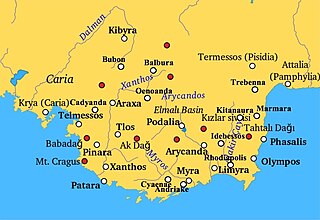
Transandinomys bolivaris, also known as the long-whiskered rice rat, is a rodent in the family Cricetidae. It is found in humid forest from northeastern Honduras to western Ecuador, up to 1,800 m (5,900 ft) above sea level. Since it was first described in 1901 from Ecuador, six scientific names have been introduced for it, but their common identity was not documented until 1998 and the species has long been known under the name Oryzomys bombycinus, described from Panama in 1912. The name Oryzomys bolivaris was used before it was moved to the new genus Transandinomys with Transandinomys talamancae in 2006.

Transandinomys talamancae is a rodent in the family Cricetidae that occurs from Costa Rica to southwestern Ecuador and northern Venezuela. Its habitat consists of lowland forests up to 1,500 m (5,000 ft) above sea level. With a body mass of 38 to 74 g, it is a medium-sized rice rat. The fur is soft and is reddish to brownish on the upperparts and white to buff on the underparts. The tail is dark brown above and lighter below and the ears and feet are long. The vibrissae (whiskers) are very long. In the skull, the rostrum is long and the braincase is low. The number of chromosomes varies from 34 to 54.

Transandinomys is a genus of rodents in the tribe Oryzomyini of family Cricetidae. It includes two species—T. bolivaris and T. talamancae—found in forests from Honduras in Central America south and east to southwestern Ecuador and northwestern Venezuela in northern South America. Until 2006, its members were included in the genus Oryzomys, but phylogenetic analysis showed that they are not closely related to the type species of that genus, and they have therefore been placed in a new genus. They may be most closely related to genera like Hylaeamys and Euryoryzomys, which contain very similar species. Both species of Transandinomys have had eventful taxonomic histories.

Adaina bolivari is a species of moth in the family Pterophoridae. It is found in Venezuela and Ecuador.

Podalia is a genus of moths in the family Megalopygidae.

Podalia, also spelled Podalaea or Podalaia (Ποδαλαία), Podallia (Ποδαλλία), and Podaleia (Ποδάλεια), was a town of ancient Lycia, mentioned by several ancient authors.
Podalia albescens is a moth of the family Megalopygidae. It was described by William Schaus in 1900. It is found in Brazil.
Podalia angulata is a moth of the family Megalopygidae. It was described by Walter Hopp in 1922. It is found in Ecuador.
Podalia cincinnata is a moth of the Megalopygidae family. It was described by Paul Dognin in 1922.
Podalia fuscescens is a moth of the family Megalopygidae. It was described by Francis Walker in 1856. It is found in Brazil.
Podalia gamelia is a moth of the family Megalopygidae. It was described by Herbert Druce in 1904.
Podalia guaya is a moth of the Megalopygidae family. It was described by William Schaus in 1927. It is found in Paraguay.
Podalia mallas is a moth of the family Megalopygidae. It was described by Herbert Druce in 1899. It is found in Brazil.
Podalia pedacia is a moth of the family Megalopygidae. It was described by Herbert Druce in 1906.
Podalia pedacioides is a moth in the Megalopygidae family. It was described by Paul Dognin in 1916.
Podalia prolecta is a moth of the family Megalopygidae. It was described by Walter Hopp in 1935.
Podalia pseudopedacia is a moth of the Megalopygidae family. It was described by Paul Dognin in 1916.
Podalia thanatos is a moth of the Megalopygidae family. It was described by William Schaus in 1905. It is found in Costa Rica and Guyana.
Podalia tympania is a moth of the family Megalopygidae. It was described by Herbert Druce in 1897. It has been recorded from Peru and Mexico.
Podalia walkeri is a moth of the Megalopygidae family. It was described by Carlos Berg in 1882 and is found in Brazil.




